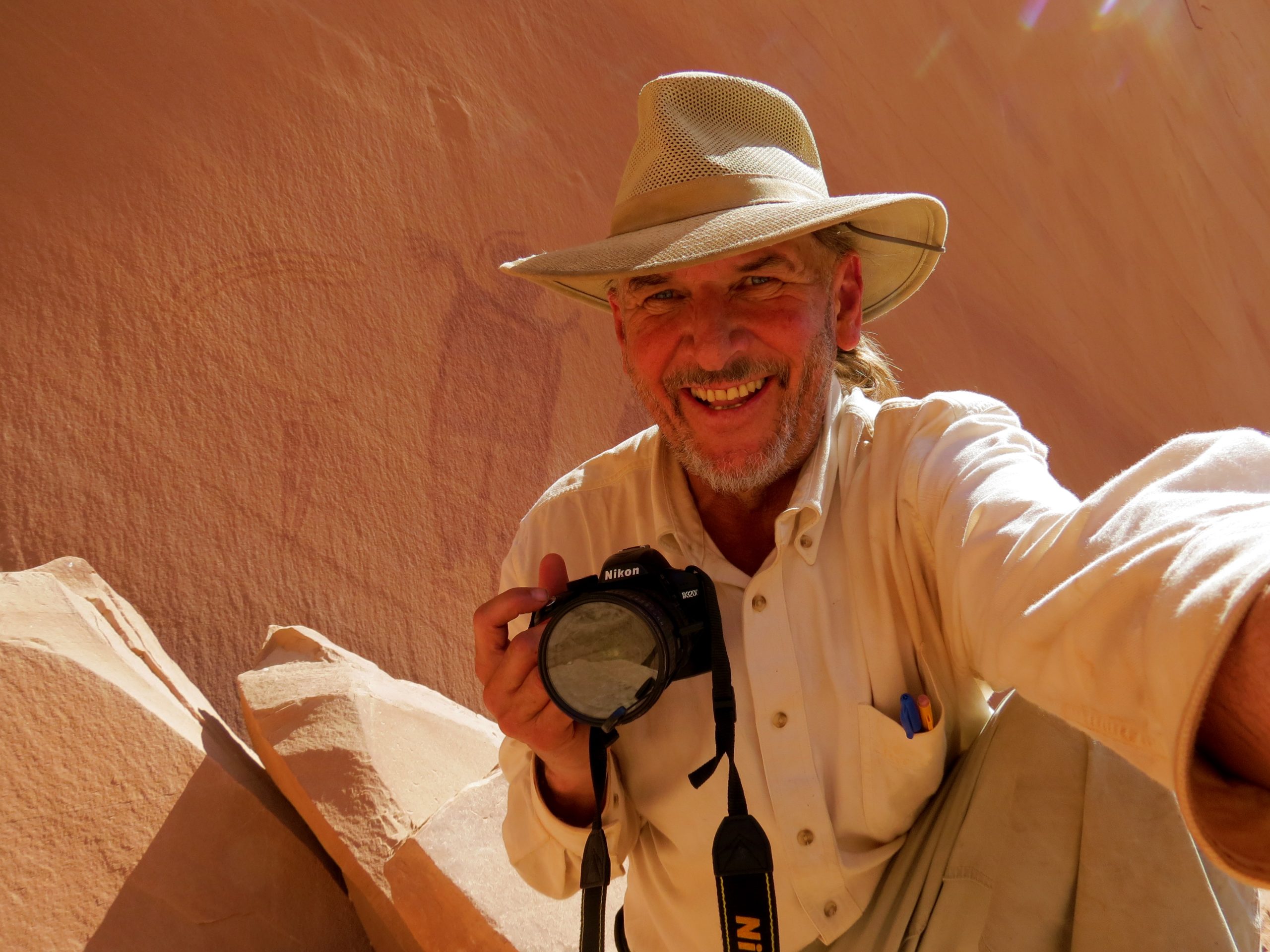Some information may be outdated.
You don’t necessarily have to travel to New Mexico’s famous Chaco Culture National Historical Park to see signs of an ancient culture’s knowledge of astronomy.
Moab resident Rory Tyler is an avid hiker who has studied rock art in the Moab area for the past 25 years. In 2013, during one of his outings north of town, he noticed interesting shadows in a canyon below where he knew pictographs existed from a culture that inhabited the area from 3,000 B.C. to 500 A.D.
When Tyler came upon the astronomical markers in Hell Roaring Canyon, he had come simply to photograph a moonset, he said. However, because of his longtime study of rock art, he believed the shadows he saw in the canyon were especially significant. So he made his way down the difficult trail, scrambling over boulders and crawling on his belly in some places to reach the area.
Tyler will give a free lecture and slideshow presentation titled “Ancient Astronomers of Moab: What Happened in Hell Roaring Canyon?” on Thursday, Feb. 11, at 7 p.m. at the Moab Arts and Recreation Center, 111 E. 100 North.
“There are four different astronomical markers there and I will talk about each of them,” Tyler said.
Tyler noted on several trips to the canyon that there are four different locations that act as astronomical sites that reflect the spring and fall equinoxes and winter and summer solstices.
“People wonder why Indians made these astronomical markers,” Tyler said. “Based on my experience, when the light lines up, I get a sense of security, satisfaction. People like to know the world is moving along in an orderly way.”
“What’s fascinating about this site is that it is Desert Archaic,” also known as the Barrier Canyon era, Tyler said. “It’s the oldest culture that has left rock art as far as we know. This is the first site that shows astronomical indicators from that culture.”
Tyler reported his findings during a presentation to the Utah Rock Art Research Association (URARA) at its annual October meeting held last year in Escalante.
Moab resident and URARA president Richard Jenkinson said there are several ancient Indian sites around Moab with astronomical significance, and that Tyler did a great job presenting his findings.
“This one is particularly interesting, as (Tyler) will show,” Jenkinson said. “I had assumed something was going on there, having been there a few times myself and seeing the alignment of two pillars across the canyon, and the way it would line up with the rising sun. He’s the one who proved it.”
This will be Tyler’s fifth rock art presentation in Moab.
“I believe this kind of art should be shared,” Tyler said. “A lot of people know about the rock art, but not the astronomy. If we learn about and talk about it, people are more prone to protect it. It’s human nature to show and tell. I’m just following my nature.”
Attendees may bring a flash drive to download the lecture if they wish. It will also be available to download at the Grand County Public Library, 257 E. Center St.
Feb. 11 lecture to focus on Hell Roaring Canyon pictographs
When: Thursday, Feb. 11, at 7 p.m.
Where: Moab Arts and Recreation Center, 111 E. 100 North
Cost: Free
Information: 435-259-6272
Appreciate the coverage? Help keep local news alive.
Chip in to support the Moab Sun News.





